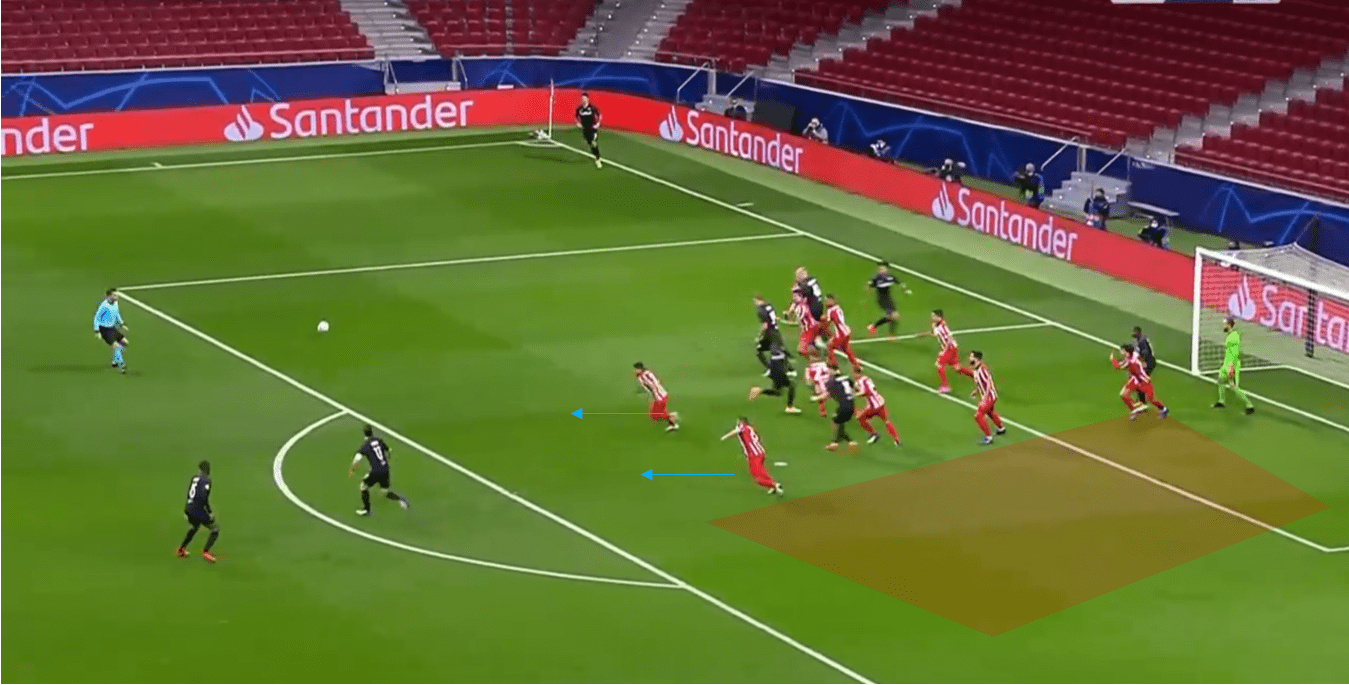This week’s set-piece example comes from a UEFA Champions League match between RB Salzburg and Atlético Madrid, with the Austrian champions using a particularly unique routine. I’ve labelled it a clever corner, but it could actually be executed much more effectively.
We can see Salzburg start with four players deep and to the left of the box. Due to Atlético employing mainly man markers, these four deeper Salzburg players are all followed out to the edge of the box. The aim of these four Salzburg players is to occupy and then vacate the passing lane to the edge of the box, with the hopes of this allowing for more space to be utilised by the receiver of the pass. We see Atlético also commit two players out more towards the edge of the box, clearly analysing that Salzburg do use the edge of the box at times, and therefore adapting their structure slightly.

The four Salzburg players in the corner of the box all make forward movements as if they were to attack an inswinging delivery, and so, Atlético naturally follow them, with their two zonal players positioned higher also taking a few steps back initially and watching the ball for a delivery. Andreas Ulmer begins his run, and Salzburg use the furthest player (Ulmer) here as it allows him to build momentum to run onto the pass, and may also help him to disguise the run if needed.

The corner is delivered to Ulmer, but Atlético’s structure allows for those two zonal players positioned on the edge of the box to push out and close down the ball. Ulmer gets a shot off but blazes it over.
The routine is a clever idea to gain access to the edge of the box, but it could be executed much more effectively. For example, one of the big problems is those two Atlético players on the edge waiting to pounce. One possible solution to this would be to have runners run onto these players to block them, or even run in their direction to make it harder for them to run through traffic. This would allow more time for the shot, and could even allow the player a touch. On top of this, Salzburg limit themselves to one option; a shot. Their structure of having everyone now in the centre of the box increases the chances of the shot being blocked, and no players actively want to receive the ball. The highest player would likely be given as offside if the ball went in from a shot.
With that initial near post overload, Salzburg created massive space at the back post, and so having a player run into this space and receive a cross from Ulmer could be effective. The other player outside the box for Salzburg could even make this run, as could another Salzburg player in the box if they are able to dismark their opponent. The highest player positioned around the goalkeeper could react and drop off as soon as the ball is played.






Comments